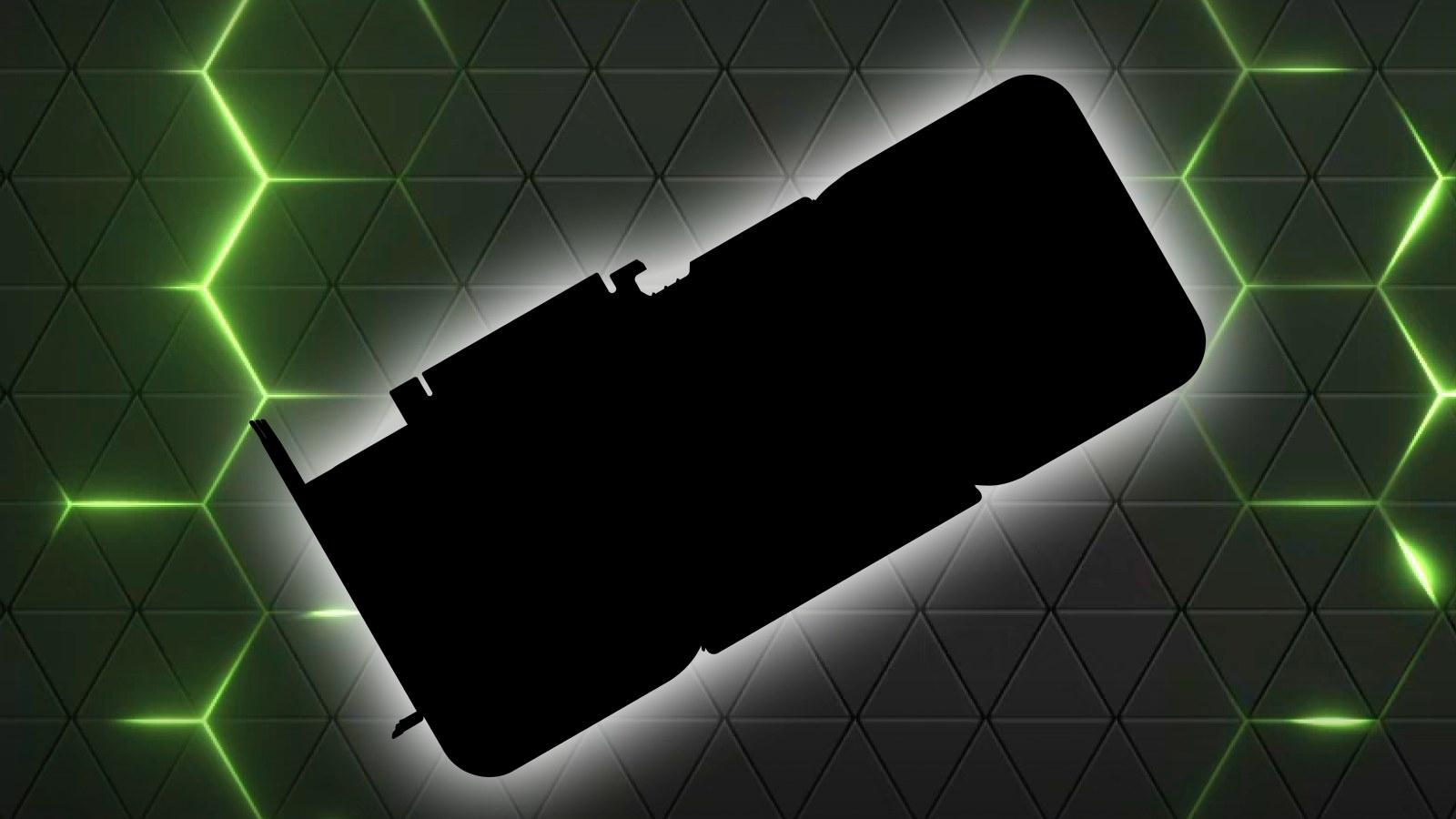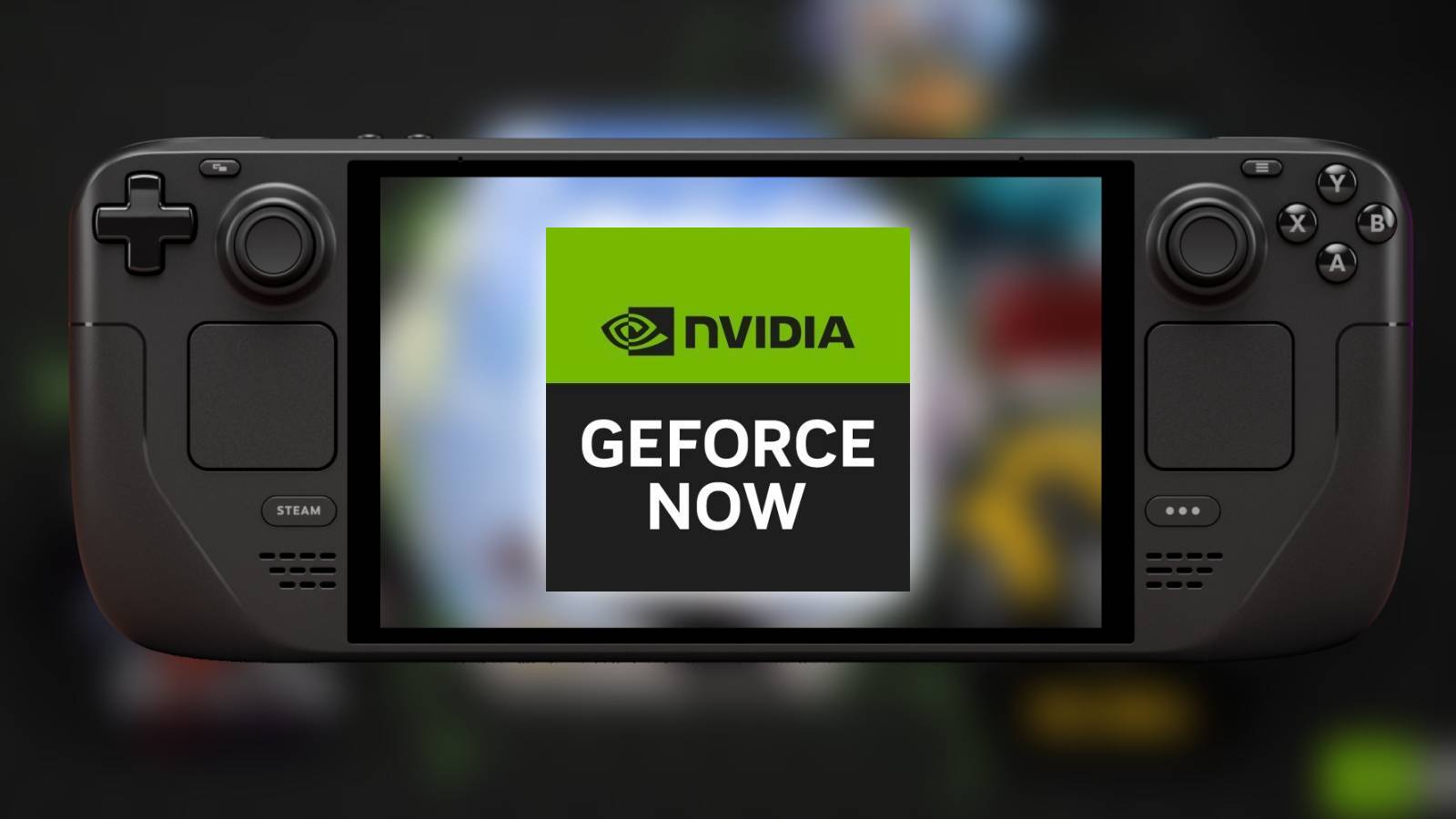Nvidia GeForce RTX 4070 Founders Edition review
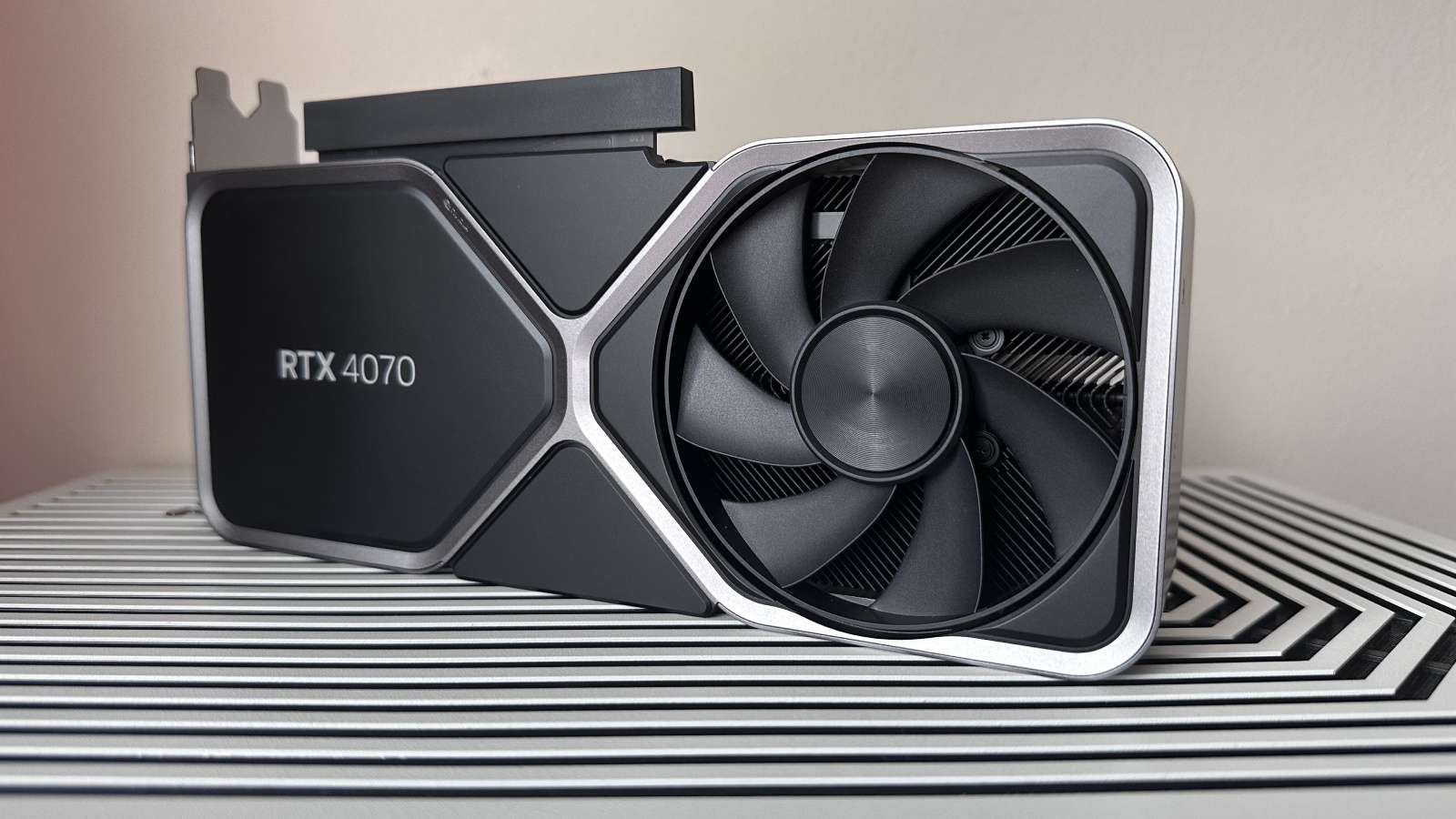 Dexerto
Dexerto Nvidia’s GeForce RTX 4070 is finally here, and at a more palatable $599, does this mid-range GPU manage to justify an upgrade?
The Nvidia RTX 4070 is the first mid-range card in the RTX 40-series lineup from stalwart GPU manufacturer Nvidia. Sporting 12GB of GDDR6X VRAM in addition to 5888 CUDA cores, this GPU promises all of the benefits of the latest generation of graphics cards, without the hefty price tag seen on the RTX 4070 Ti, RTX 4080, and RTX 4090.
But, is it worth an upgrade for those on RTX 30-series GPUs or older, and if so, what kind of performance should you expect? We dive deep into what makes this GPU tick, and what kind of performance you should expect from it.
Key specs
| GPU | Nvidia GeForce RTX 4070 Founders Edition |
| CUDA cores | 5888 |
| Boost clock | 2475 MHz |
| Memory clock | 10500 MHz |
| Memory speed | 21 Gbps |
| Memory | 12GB GDDR6X |
| Memory bus width | 192-bit |
| TGP | 200W |
| Power input | 16-pin |
| Size | Dual-slot |
| Display outputs | 3x DisplayPort 1.4a, 1x HDMI 2.1 |
| Price | $599 |
Design
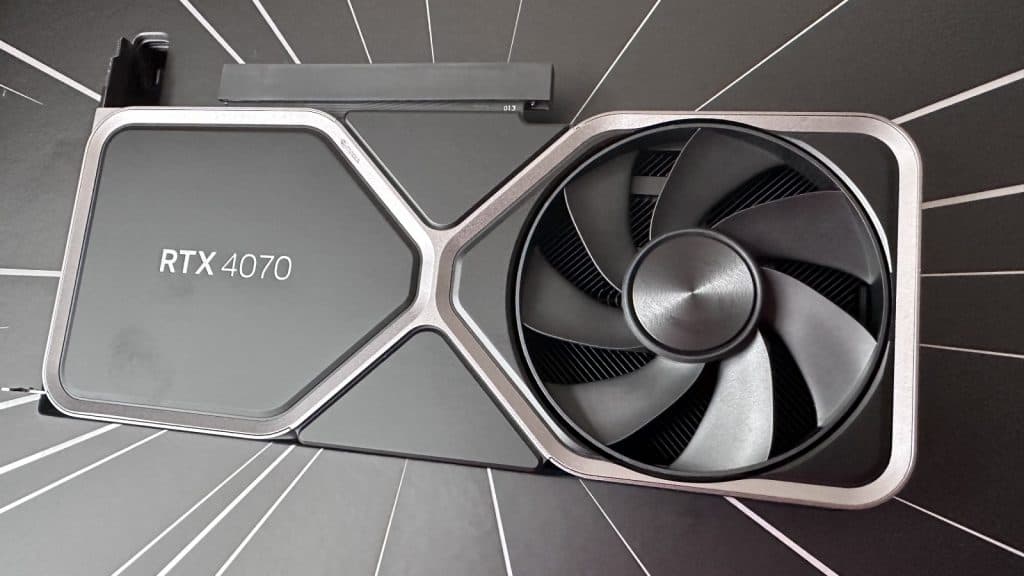 Dexerto
Dexerto The RTX 4070 may appear to be familiar to those who have already seen older RTX 30 and 40-series Founders Edition models. Sporting dual flow-through fans, in addition to an all-metal chassis. Black heatsinks encase the relatively short GPU. This two-slot design would make the GPU ideal for those building into smaller form-factor setups.
The new Founders Edition card also sports a larger fan when compared to previous generations, allowing for more airflow at lower RPMs. This means that the GPU will be cooler and quieter passively. The metal finish does differ from the RTX 4080 and RTX 4090 somewhat, with a slightly darker, more violet tone to the finish.
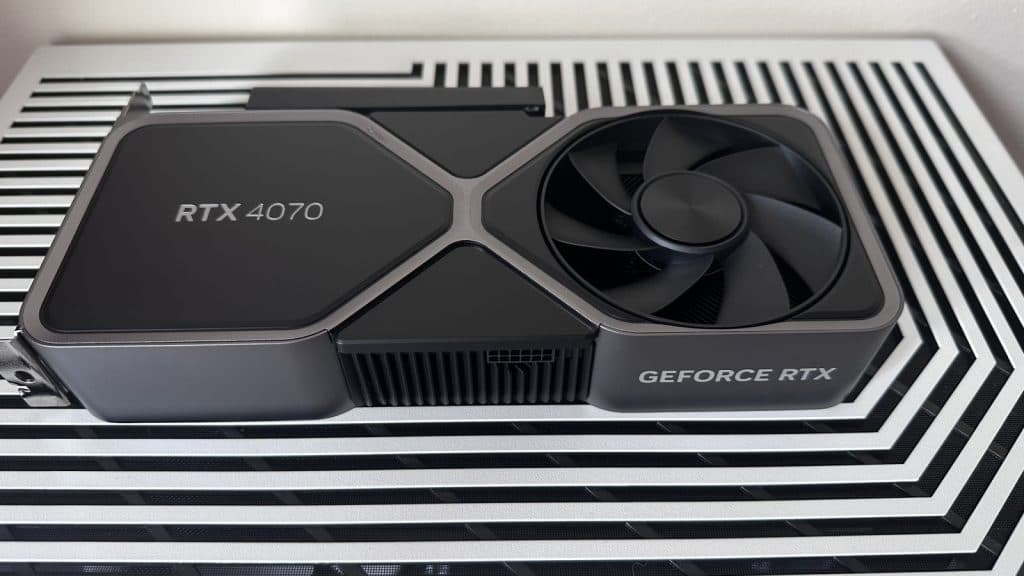 Dexerto
Dexerto On the side of the GPU, you will find a 12VHPWR connector, which will be able to send up to 200W of power to the GPU. Some AIB models of the graphics card will instead make use of the usual 8-pin PCIe connectors, instead. Again, we much preferred how these power connectors were seated on the RTX 3080 Founders edition model, as the cable jutting out can cause some clearance issues with smaller cases.
There’s an array of IO at the back, including three DisplayPort inputs, in addition to an HDMI 2.1 connector. However, what’s going on inside the GPU is much more interesting.
AD104 on a budget
The AD104 chip inside of the RTX 4070 is a cut-down version of what we’ve already seen with the RTX 4070 Ti, this could go some way to explain why the memory configuration for both graphics cards is exactly the same. However, with a reduced CUDA core count in addition to a 200W TGP, you should expect markedly slower performance.
However, the RTX 4070 also has an interesting caching situation. Peaking at 504 GB/s, Nvidia claims to make up 192-bit bus width with a large 36MB L2 cache which “improves performance, reduces latency and increases power efficiency, as data access can remain on-chip (rather than having to rely on memory bandwidth)” according to Nvidia.
There were various theories about what specifications the RTX 4070 was ultimately going to land at. In its final iteration, it’s slightly less powerful when compared to previous generational leaps in terms of pure rasterization performance.
Performance
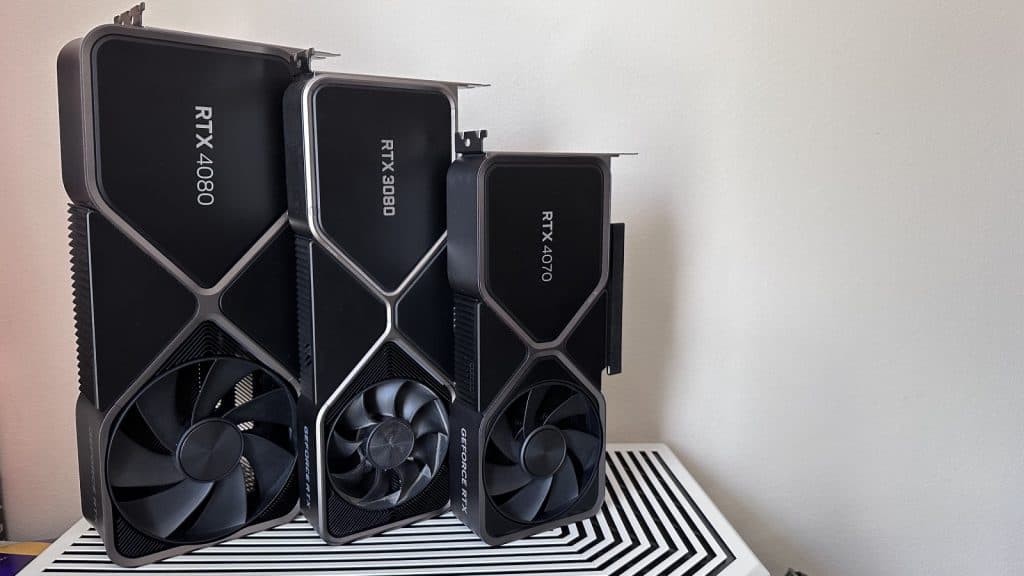 Dexerto
Dexerto The RTX 4070 is positioned as a 1440p gaming card. With this in mind, we’ve also benchmarked the GPU at 4K in order to get a better understanding of how to push the limits of this particular GPU. We’ve also tested DLSS 3’s frame-generation technology with certain titles alongside ray tracing workloads. We have chosen to opt out of a 1080p benchmarking suite, as it’s highly unlikely that those dropping around $599 on a graphics card will be using a plain-jane 1080p display. If that person is you, and you’re reading this, be sure to pick up an appropriately powerful monitor to complement your choice of GPU.
Test System
- CPU: Intel Core i5-13600K
- CPU cooler: Cooler Master PL360 Flux
- Motherboard: ASUS ROG Z790 Maximus Extreme
- RAM: ADATA XPG Lancer RGB 32GB DDR5-6000
- Storage: Sabrent Rocket 4 Plus 4TB
- Case: Hyte Y60
- PSU: EVGA Supernova GT 1300
Our testbench system should be able to replicate what performance should look like if you took an RTX 4070 home with a current-generation system and parts, and be able to push many of those higher framerates in esports titles.
How do you measure DLSS 3 performance?
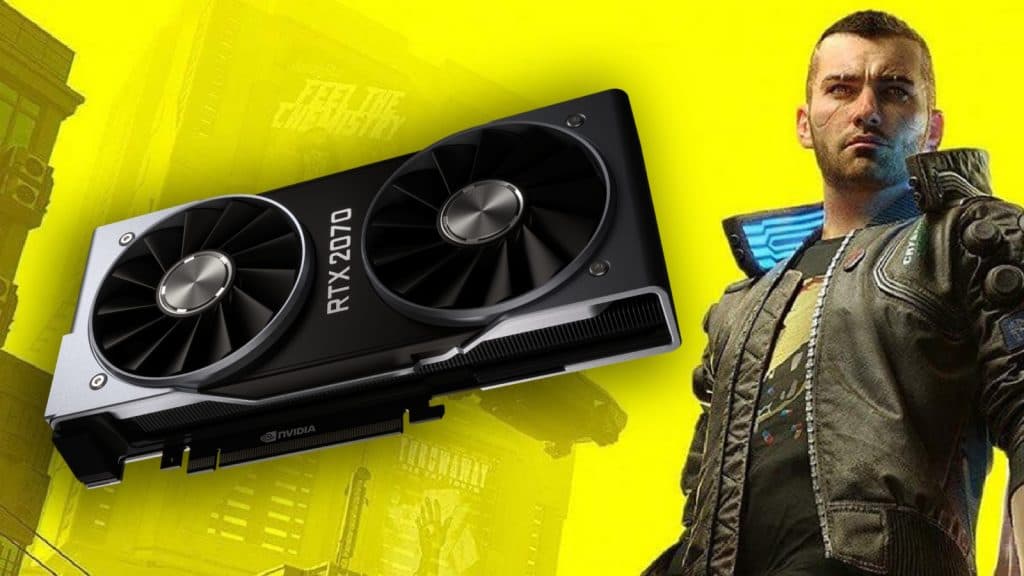 Dexerto
Dexerto According to documents supplied via Nvidia, DLSS 3 is getting adopted seven times faster than previous generations, with over 50 titles currently supporting the feature. Data from Nvidia also shows that 71% of RTX 30-series gamers turn DLSS on, with even further adoption of techniques like ray tracing.
While DLSS 3 is indeed an incredible feature, it should be presented as a part of a GPU’s performance, but not wholly showcased as that. That’s why we’re keeping our Forza Horizon 5 benchmarks DLSS and Ray Tracing-free, in order to showcase the pure rasterization performance of the GPU. Sadly, for the duration of our testing, we were unable to check out Cyberpunk 2077’s brand-new Ray Tracing Overdrive mode.
RTX 4070 4K gaming performance
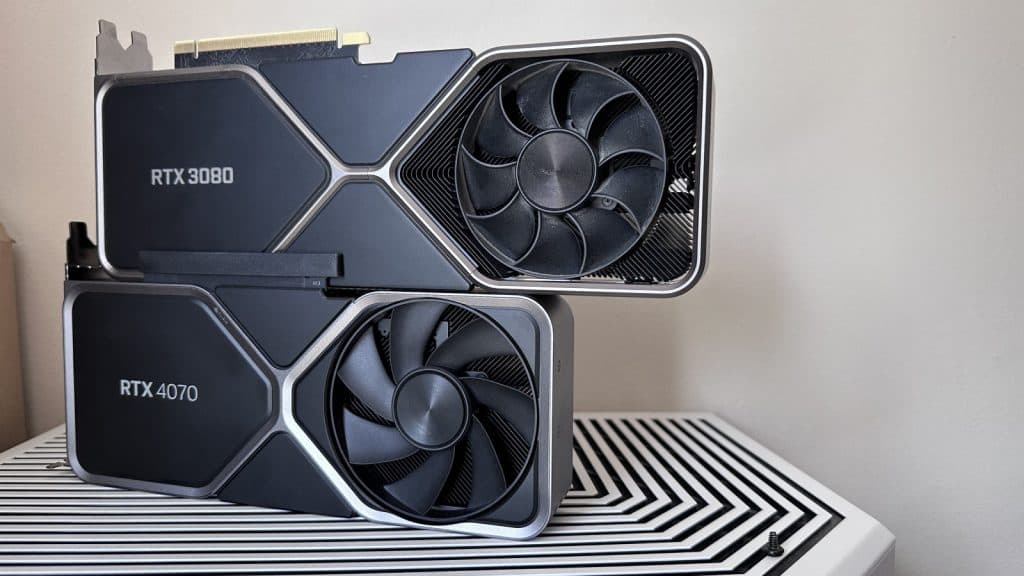 Dexerto
Dexerto Kicking off with 4K benchmarks, the RTX 4070 manages to hold its own, offering excellent framerates across the board for gaming workloads. Here, we see the RTX 4070 outperform the older RTX 3080 by a small margin, likely thanks to its larger VRAM capacity, improvements to RT cores, and larger L2 cache.
| Game | RTX 4070 Founders Edition | RTX 3080 Founders Edition | RTX 4070 Ti GIGABYTE Gaming OC | RTX 4080 Founders Edition | AMD Radeon RX 7900 XT |
| Forza Horizon 5 (Ultra, RT & DLSS off) | 89 FPS | 92 FPS | 123 FPS | 137 FPS | 107 FPS |
| Cyberpunk 2077 (Ultra, RT Ultra, DLSS 3 Performance, Frame Generation) | 72 FPS | 49 FPS | 86 FPS | 108 FPS | 44 FPS |
| Cyberpunk 2077 (Ultra, RT Ultra, DLSS off) | 17 FPS | 13 FPS | 22 FPS | 29 FPS | 16 FPS |
| CS:GO (High, Dust 2) | 204 FPS | 201 FPS | 252 FPS | 399 FPS | 340 FPS |
| Overwatch 2 (Ultra) | 157 FPS | 148 FPS | 257 FPS | 446 FPS | 308 FPS |
The RTX 4070 at 4K is 6% faster than the RTX 3080, and 37% slower than the RTX 4070 Ti, though that average is slightly skewed when taking into account the esports titles, which can push to much higher framerates. Excluding them, the RTX 4070 is around 29% slower than the RTX 4070 Ti at 4K resolution.
This is nothing too unexpected, though we did wish that the RTX 4070 would be slightly faster, to give it an edge in terms of performance against older-generation GPUs. However, the margin in performance greatly differs in Cyberpunk 2077, where you can observe significantly better performance than the RTX 3080 in ray-traced workloads with DLSS 3’s frame generation feature.
With that said, the RTX 4070 is not marketed as a 4K GPU, though it will manage to push playable framerates in many modern titles.
RTX 4070 1440p gaming performance
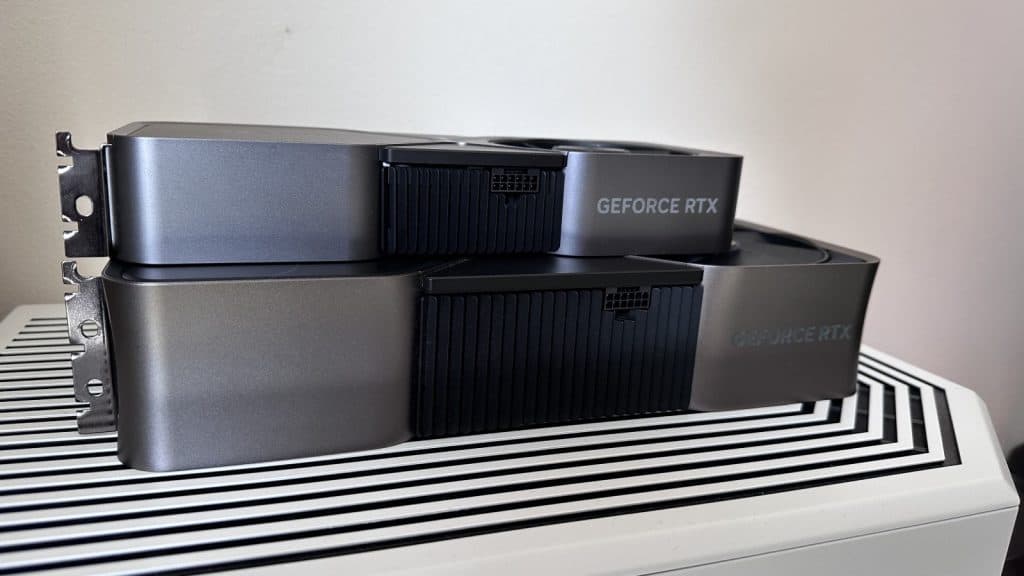 Dexerto
Dexerto At 1440p, the RTX 4070 offers incredibly competitive performance, with framerates that can consistently reach into the triple digits in traditional rasterization workloads. We have also retested and benchmarked older graphics cards without the frame limiter on CS:GO, in order to get a more accurate idea of performance for these graphics cards.
| Game | Nvidia RTX 4070 Founders Edition | Nvidia RTX 3080 Founders Edition | RTX 4070 Ti GIGABYTE Gaming OC | RTX 4080 Founders Editon | AMD Radeon RX 7900 XT |
| Forza Horizon 5 (Ultra) | 132 FPS | 120 FPS | 147 FPS | 161 FPS | 121 FPS |
| Cyberpunk 2077 (Ultra, RT Ultra, DLSS Performance, Frame Generation / FSR ) | 126 FPS | 85 FPS | 161 FPS | 181 FPS | 60 FPS |
| Cyberpunk 2077 (Ultra, RT Ultra, DLSS off) | 39 FPS | 38 FPS | 47 FPS | 63 FPS | 31 FPS |
| CS:GO (High, Dust 2) | 607 FPS | 582 FPS | 694 FPS | 742 FPS | 641 FPS |
| Overwatch 2 (Ultra) | 356 FPS | 334 FPS | 404 FPS | 512 FPS | 406 FPS |
At 1440p, the gap between the RTX 4070 and RTX 3080 closes slightly, with an 8% performance increase upon the popular Ampere graphics card. When compared to the RTX 4070 Ti, the GPU is slower by around 15%. Considering the RTX 4070 Ti is about 33% more expensive than the RTX 4070, the RTX 4070 could be a great option for those looking to get a modern GPU that’s able to make use of killer features like DLSS 3.
Synthetic benchmarks
| Benchmark | Nvidia RTX 4070 Founders Edition | Nvidia RTX 3080 Founders Edition | RTX 4070 Ti GIGABYTE Gaming OC | RTX 4080 Founders Editon | RTX 4090 Founders Edition | AMD Radeon RX 7900 XT |
| Speed Way | 4520 | 4582 | 5471 | 7179 | 10310 | 4697 |
| Port Royal | 11293 | 11444 | 14230 | 17829 | 22598 | 13074 |
| Time Spy Extreme (Graphics score) | 8608 | 8766 | 11015 | 14028 | 18578 | 12979 |
The Nvidia RTX 4070 is roughly equal to the RTX 3080 in synthetic benchmarks, with a 1% difference between the GPUs, as the 3080 slightly pulls ahead. It is also 25% slower than the RTX 4070 Ti. This difference in performance is nothing too unexpected, given the gaming benchmarks between the two GPUs, and it also highlights the value proposition between the two cards.
Thermals & noise
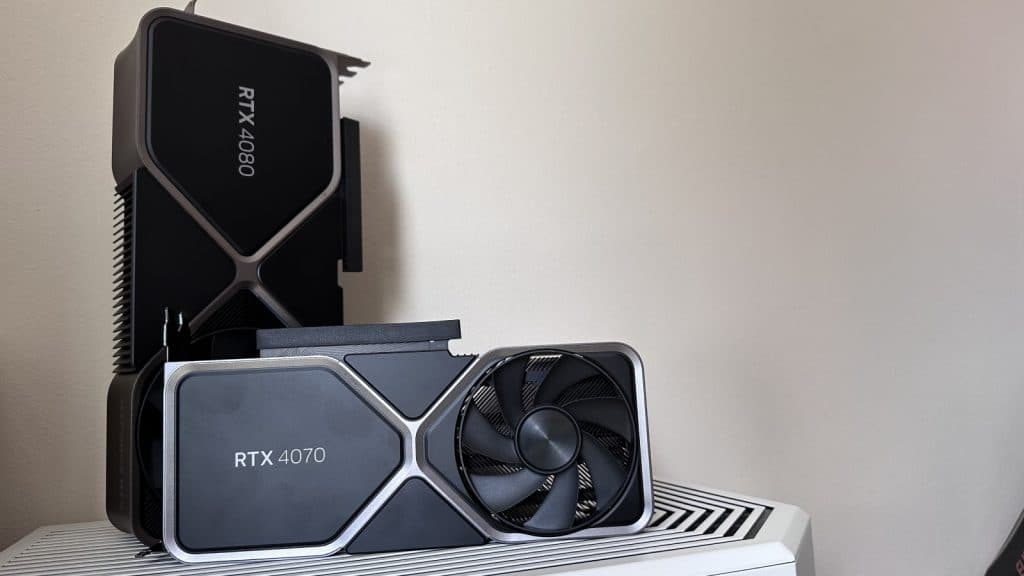 Dexerto
Dexerto The RTX 4070 Founders Edition reached a peak of 83 degrees whilst undergoing our torture tests, but in normal gaming workloads, we found the GPU to top out at around 72 degrees. This ensures that the chip is operating at its full boost clock of around 2475MHz in most gaming workloads, with the flow-through design clearly putting in some hard work, here.
One thing to note is that we did encounter a very audible coil whine from the RTX 4070 Founders Edition. In instances where framerates are uncapped, we did have a loud buzz emitting from the GPU while in testing. Though, in instances where framerates were capped in normal gaming scenarios, we didn’t hear anything at all. Due to the nature of coil whine, it’s likely that this issue will differ from card to card.
The fans also spin up under load, and we did not think that the GPU was particularly noisy inside an enclosed case.
Efficiency & costs per-frame
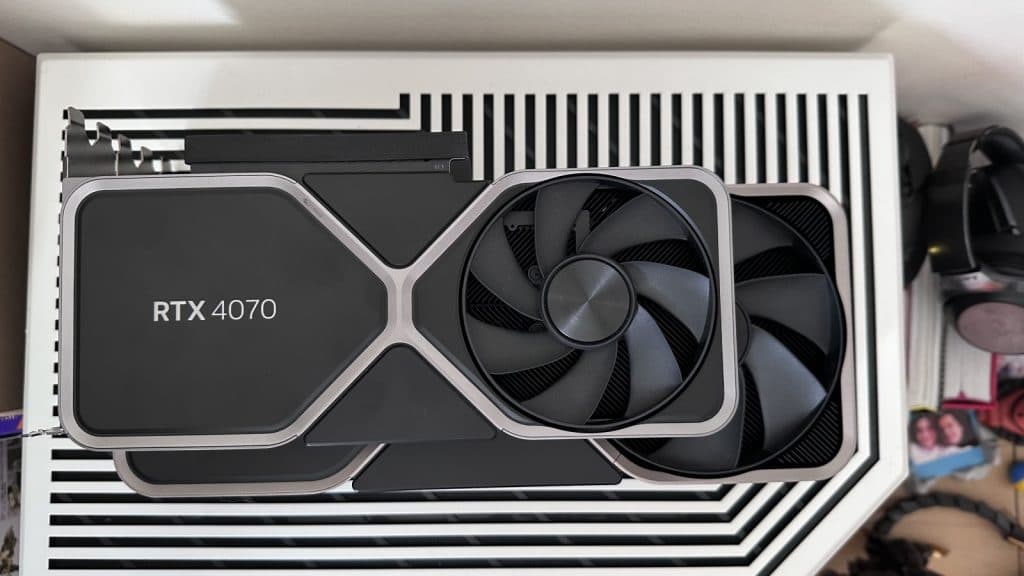 Dexerto
Dexerto The RTX 4070 is notable for two things – cost per frame and power efficiency. Much like the RTX 40-series GPUs before it, the wattage efficiency gains when compared to the 3080 are nothing short of staggering. You get around the same levels of performance at 200W on the RTX 4070, versus the RTX 3080’s 320W.
The RTX 4070’s costs-per-frame analysis also tells an interesting story of the higher-end RTX 40-series graphics cards thus far. To calculate this, we added up the average benchmarked framerates of all GPUs in our standardized tests and divided it by the MSRP costs of the GPU in order to get an average frame-per-dollar ratio.
- RTX 4070 – 3.0 frames per-dollar
- RTX 3080 – 2.3 frames per-dollar
- RTX 4070 Ti – 2.7 frames per-dollar
- RTX 4080 – 3.4 frames per-dollar
Interestingly, we also compared this against the RTX 3080, if you were to pick one up brand-new today for $699, it ended up at 2.3 frames per dollar. While the RTX 4070 may be more expensive than its previous-generation counterpart, adjusted for inflation, the MSRP cost of the RTX 3070 would have been around $582 today.
We were unable to add the RTX 4090 to the cost-per-frame calculations due to benchmarks not being as standard with our current testing system, therefore it would not be fair to compare the two.
It all hinges on MSRP pricing
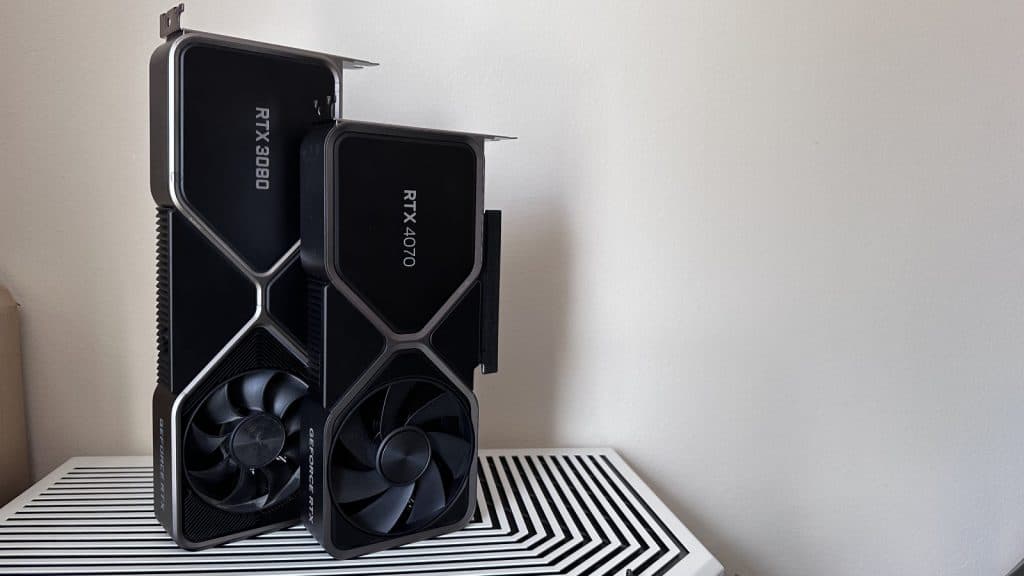 Dexerto
Dexerto One thing that this GPU absolutely hinges on, much like its predecessor, the RTX 4070 Ti, is availability at MSRP pricing. We have been assured by Nvidia that there are plenty of GPUs going on sale at launch in order to sate any consumer demand. Nvidia has also reportedly urged its partners to sell the GPU at MSRP pricing.
While $599 is indeed a competitive price point, the GPU doesn’t blow us away in too many ways when it comes to a near three-year difference in performance versus the RTX 3080. It instead highlights just how poor of a value proposition the RTX 4070 Ti really is, especially when it has inflated pricing with many AIB partners.
Should you buy it?
For those who have an older RTX 10 or 20-series graphics card, the RTX 4070 is an attractive upgrade, and offers great performance at 4K, 1440p, and 1080p. It is essentially an RTX 3080 with some extra VRAM and DLSS 3 goodies crammed into it. However, if you already own an RTX 30-series GPU, the jump in performance will be pretty disappointing.
The verdict – 4/5
The RTX 4070 is yet another solid entry into the RTX 40-series lineup. It offers an accessible entry point and access to future-forward features like DLSS 3. However, its pricing remains key. At $599, it is a competitive GPU, at any price above that, you may wish to look at other options on the market.
If you click on a product link on this page we may earn a small affiliate commission.

